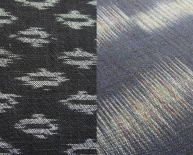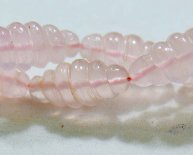
Nylon thread properties

Modern nylon and polyester filament yarns share some similarities that may allow for cost reductions through materials engineering where polyester replaces nylon. However, there are some key differences to consider when designing an industrial sewing thread, hose reinforcement yarn, or textile binder or strength member. How are these fibers similar and how do they differ? The answers can be found in looking at the basic properties, and more importantly the end product application and environmental exposure to the fibers that will make all the difference in product success or failure,
Polyester and Nylon multifilament yarns are available in similar deniers or sizes that can be assembled and twisted into a variety of industrial yarn or sewing threads to meet most end-use requirements. Nylon sewing thread has a higher strength to linear density ratio (Tenacity) than Polyester. Tenacity is commonly expressed as grams per denier (gpd) with High Tenacity (HT) polyester typically running 9.0 gpd and Nylon 6, 6 at 10.0 gpd. So if strength is the only consideration, nylon would appear to be the best choice. Of course, there's much more to the story!
Outdoor materials require threads that can withstand severe weathering conditions and require properties such as UV resistance, high strength, and resistance to abrasion, mildew and even saltwater, in order to extend its life. Polyester is the most common thread for outdoor applications. In the presence of UV rays, Nylon will break down and start to degrade much faster than Polyester. Polyester naturally inhibits UV and is therefore recommended for a number of outdoor uses – cushions, upholstery, sails, canvas covers, boat covers, awnings, tents, tarps, geotextile and, in general, all outdoor applications.
For indoor applications, the UV resistance becomes less important and strength, abrasion resistance and stretch becomes more important. Nylon has better elastic and abrasion resistance properties than polyester, with its superior stretch and recovery properties making it the preferred choice for upholstery material and thread as well as materials that experience heavy traffic e.g. carpets and other artificial surfaces. However, nylon tends to absorb more moisture than Polyester (moisture regain for nylon is ~4% vs ~0.4% for polyester) and when wet will stretch approx. 3.5% beyond its original length, which is why polyester is the preferred tenting material.
Nylon has excellent resistance to hydrocarbons (gasoline, kerosene and diesel fuel), oils, cleaning solutions and alkalis but nylon is attacked by oxidizing agents, organic acids, hot mineral acids and aromatic alcohols. Nylon also dissolves with partial decomposition in concentrated solutions of hydrochloric, sulphuric, and nitric acids and is soluble in formic acids.
Polyester is resistant to acids, oxidizers such as hydrogen peroxide and most solvents. Polyester has excellent resistance to hydrocarbon fuels, oils and Lubricants, however it is attacked by strong alkalis such as concentrated solutions of sodium hydroxide (lye or caustic soda), calcium hydroxide (lime, mortar), ammonia, trisodium phosphate or sodium carbonate (washing soda, soda ash).
















